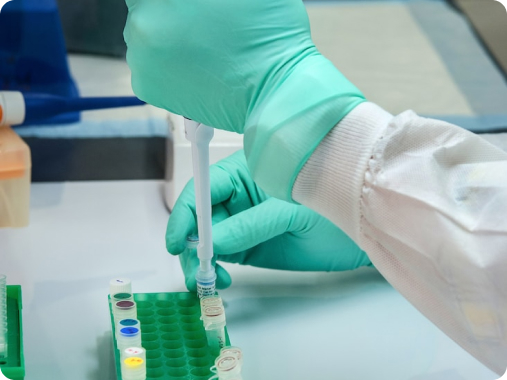Improving lab efficiency requires a strategic approach that addresses both operational and technological aspects. Here are the top five steps to enhance lab efficiency:
1. Implement a Comprehensive Lab Management System
Invest in a robust Laboratory Information Management System (LIMS) or an integrated Lab Asset Management system that centralizes data management, workflow automation, and asset tracking.
This ensures seamless data flow, reduces manual errors, and improves compliance with regulatory standards. Automation of routine tasks allows staff to focus on more critical activities, boosting overall lab efficiency.
2. Optimize Lab Layout and Space Utilization
Analyze the current lab layout and workflows to identify inefficiencies in space utilization and equipment placement. Reorganize the lab to minimize movement, reduce bottlenecks, and streamline lab efficiency processes.
An optimized layout reduces the time spent on tasks, minimizes the risk of errors, and enhances the overall productivity of lab personnel.
3. Standardize and Automate Routine Processes
Identify routine and repetitive tasks that can be standardized and automated, such as sample processing, data entry, and equipment calibration.
Automation and standardization reduce variability, improve the consistency of results, and free up valuable staff time for more complex and value-added activities.
4. Enhance Training and Skill Development
Invest in continuous training programs for lab personnel to ensure they are proficient in the latest technologies, tools, and best practices. Cross-training staff on different instruments and procedures can also increase flexibility.
A well-trained team is more efficient, less prone to errors, and better equipped to adapt to changes or challenges in the lab environment.
5. Implement Predictive Maintenance and Real-Time Monitoring
Utilize predictive maintenance tools and IoT sensors to monitor the health and usage of critical lab equipment in real-time. Schedule maintenance based on actual usage and predictive analytics rather than a fixed calendar schedule.
This approach minimizes unexpected equipment downtime, extends the lifespan of assets, and ensures that the lab operates at peak efficiency without interruptions.
By focusing on these five key steps—implementing a comprehensive management system, optimizing lab layout, standardizing processes, enhancing training, and adopting predictive maintenance—labs in the pharmaceutical and biotech industries can significantly improve their efficiency, reduce costs, and maintain high standards of quality and compliance.
Why prioritize lab efficiency:
1. Cost Reduction
- Lower Operational Costs: Efficient labs minimize waste, reduce downtime, and optimize resource use, which directly cuts costs. This includes reducing energy consumption, minimizing the need for emergency repairs, and avoiding unnecessary purchases of equipment or materials.
- Better Resource Allocation: By improving efficiency, you can make better use of existing resources, delaying or avoiding the need for additional investments in new equipment or space.
2. Increased Productivity
- Faster Turnaround Times: Optimized workflows and processes mean that tasks are completed more quickly, allowing the lab to handle a higher volume of work in the same amount of time. This is particularly important in industries where speed to market can be a competitive advantage.
- Maximizing Throughput: By streamlining operations and reducing bottlenecks, the lab can process more samples, run more experiments, and generate more data within the same time frame, increasing overall lab efficiency.
3. Enhanced Quality and Compliance
- Consistency and Accuracy: Efficient labs produce more reliable and consistent results, reducing the risk of errors that can lead to failed experiments or regulatory issues. This is critical in pharmaceutical and biotech environments, where the accuracy of data directly impacts product development and patient safety.
- Regulatory Compliance: Optimized labs are better equipped to maintain compliance with industry regulations, such as GLP and GMP. Efficient management of documentation, calibration, and maintenance schedules helps ensure that all activities meet regulatory standards.
4. Improved Innovation and Competitive Advantage
- Focus on Innovation: When routine processes are efficient, lab personnel can dedicate more time to research, development, and innovation. This can lead to the discovery of new drugs, therapies, or technologies, providing a significant competitive advantage.
- Faster Time to Market: In industries where being first to market can be a game-changer, lab efficiency allows you to move from discovery to production more rapidly, capturing market share and establishing leadership in the field.
5. Better Utilization of Talent
- Maximized Employee Productivity: By reducing the time spent on repetitive or mundane tasks, lab staff can focus on higher-value activities that require their expertise, leading to greater job satisfaction and better use of their skills.
- Flexibility and Agility: An efficient lab is more adaptable to change, whether it’s scaling up operations, adopting new technologies, or responding to unexpected challenges. This flexibility ensures that the lab can pivot quickly as needed, maintaining its effectiveness in a dynamic industry.
6. Sustainability and Corporate Responsibility
- Environmental Impact: Efficient labs use resources more effectively, reducing waste and energy consumption. This not only lowers costs but also aligns with corporate sustainability goals, which are increasingly important to stakeholders and consumers.
- Corporate Responsibility: Maintaining an efficient, compliant, and innovative lab environment demonstrates a commitment to excellence, safety, and ethical practices, enhancing the organization’s reputation.
Optimizing lab efficiency is not just about cutting costs—it’s about enhancing the overall effectiveness and competitiveness of your laboratory. It leads to better outcomes, faster innovation, and a stronger position in the market while ensuring compliance and sustainable practices.
Lab Efficiency with Renovo Solutions
In research and development, precision is not negotiable. It’s the cornerstone of groundbreaking discoveries, innovative therapies, and scientific advancements. Renovo Solutions – Life Sciences is your partner in unlocking precision through optimized lab equipment. Embrace a future where your lab operates seamlessly, where instruments are not just tools but precision partners in your scientific journey. Contact Renovo Solutions today to learn more about our laboratory asset management programs and embark on a precision-driven path that defines the future of your research. Precision is not just a goal; it’s our commitment.

